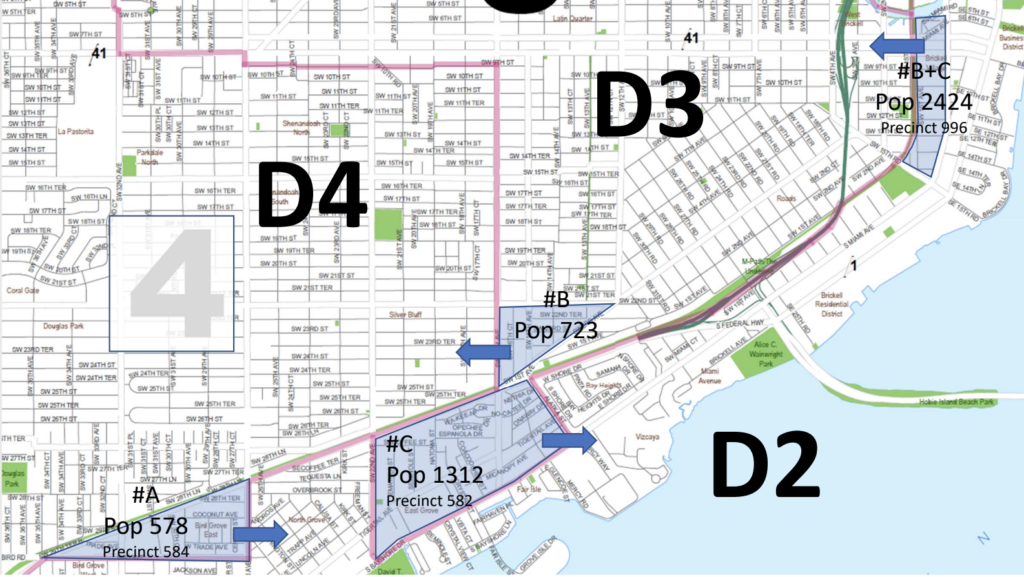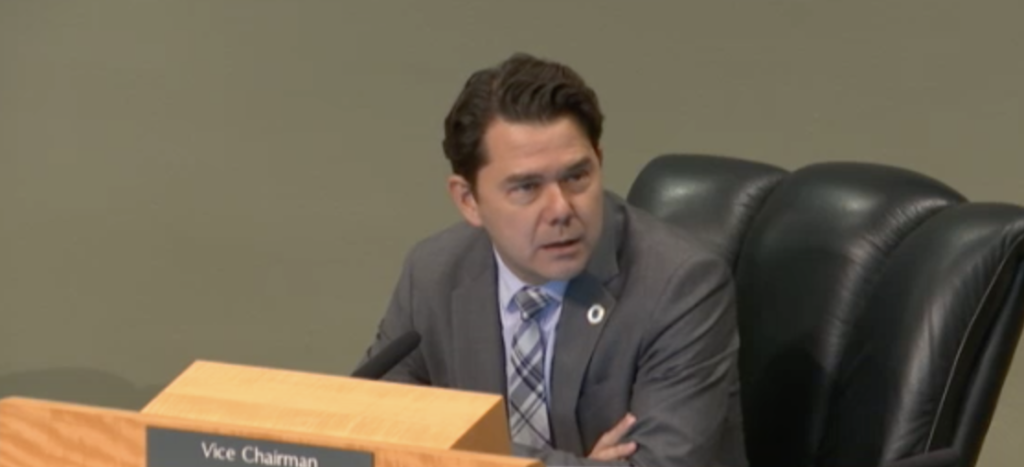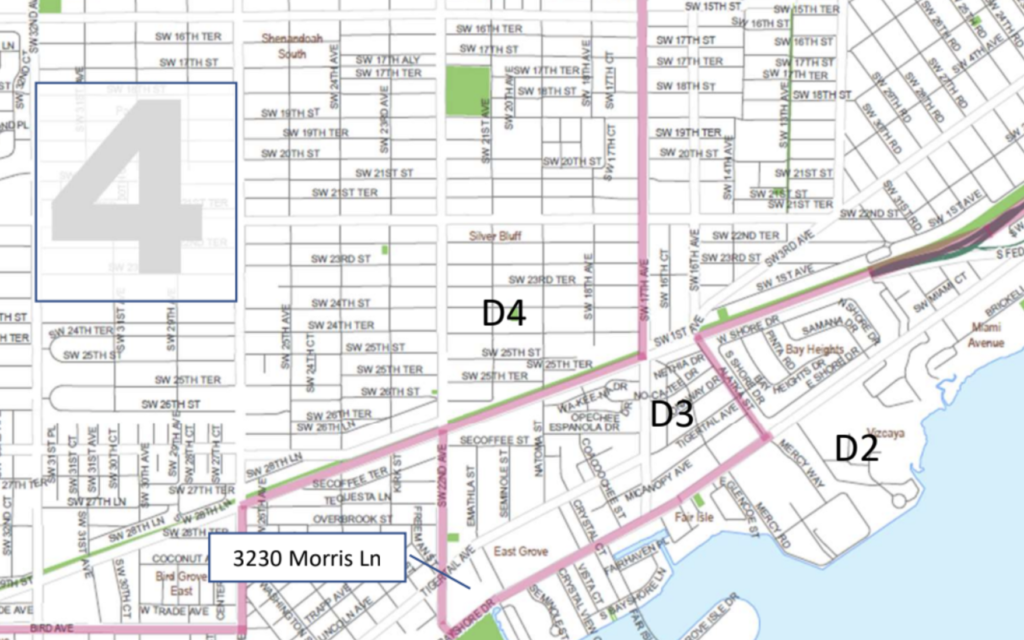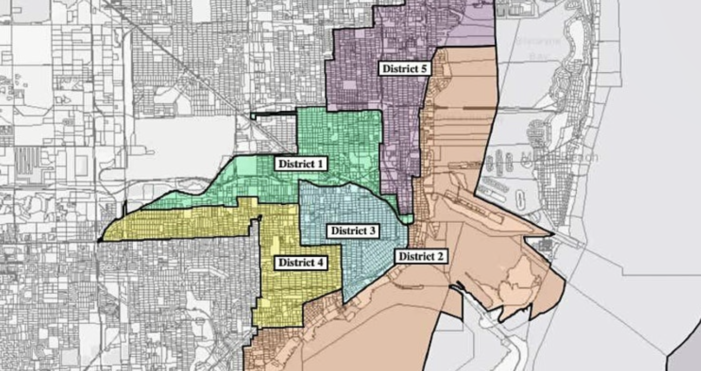And city Commissioner Joe Carollo’s house is drawn into his district
The latest redistricting map for the city of Miami cuts Coconut Grove into three districts, rather than one, which residents are vehemently against.
It also takes great pains to put Commissioner Joe Carollo‘s house — the one he swears he doesn’t live in — into his district.
¡Que descaro!
Miami Commissioners will get a look at the latest map and could give it preliminary approval at a special meeting Friday. Ladra expects a large contingent of Coconut Grove residents to speak against the division of their historic community into three districts: District 2, which is Commissioner Ken Russell‘s district and has included all of Coconut Grove since districts began, District 4, which is currently Commissioner Manolo Reyes‘ district, and District 3, which is currently Carollo’s.
It’s like everybody is grabbing at a piñata.
How on Earth does it make sense to have one community represented by three different electeds? Is the point here to dilute the vote of a very active and engaged electorate?

Redistricting happens every 10 years after the U.S Census measures population growth. It is meant to ensure equal representation, so that no one district is too much bigger than the others, and so that different racial and ethnic communities have a voice. The threshold is 10% population deviation between the largest district and the smallest.
Read related: Miami could give law firm carte blanche in ‘conflicts of interests’ in redistricting
District 2, which runs from Coconut Grove all the way up to Morningside, has experienced the most growth in the past decade so it needs to shed voters. But the growth has been in the urban core, the Brickell area mostly, next to the shore. Not the neighborhood of single family homes in the Grove. Why didn’t the commission just grab some of those Brickell voters and leave the Grove whole?
That might be what Russell presents in an alternate map he will bring to the meeting. It may also be what a group of 1,500 or so residents who have united to oppose this carving up of Coconut Grove ask for.
“There are alternatives. We can come up with a better plan,” said attorney David Winker, who has been hired to represent One Grove, the unified community opposing this division of a neighborhood that was there before the city of Miami annexed it in 1925.
“You keep a community that predates the city of Miami together,” Winker said. “No Grove residents are in support of being put in D3 and D4 and commissioners should do this right and include residents and what they want in the redistricting process.
“This seems to be punishing the Grove.”
It’s true that there has been very little opportunity for the residents to help shape the redistricting. There have not been any community town halls. And the new map, as is, could be seen as diluting the Grove’s voting power. At least 66 black families could be moved into District 4.

“So few African Americans are left in the Grove, you cannot dilute their power,” Russell told Ladra. “It’s not about getting a black commissioner. It’s about getting a commissioner who will fight for your interests in an affluent district.”
Russell said that the goals of redistricting can be achieved without breaking up the Grove.
Las malas lenguas say that the move is meant to ensure that former Commissioner Marc Sarnoff can’t run again. Another theory is that each of the Three Amigos plan to run for mayor next year and Carollo and Reyes can use their new district to raise funds. Reyes gets Golden Pines, a mostly Hispanic enclave of young people north of U.S. 1 where Douglas Park, which just saw $7 million of improvements, is. He can take credit for that.
Read related: Bill Galvano bows out of Miami redistricting gig after commission dis
And, of course, giving District 3 that little hemorrhoid hanging piece of the Grove allows Carollo to legally live in his mansion on Morris Lane, rather than the tiny Brickell Lofts apartment we are supposed to believe he moved into the day before the deadline to establish residency or the house he rents on 10th Street in Little Havana.

How does he think he’s going to get away with this? This kind of special interest carving is exactly what redistricting is not supposed to look like.
Rather than carving up neighborhoods, the city of Miami should be adding a couple of districts to its map. We have the population, with 467,963 as of the 2020 census. We have the area.
And with seven commissioners (some people want want nine; others want more), it would be harder to buy off a majority.
That’s exactly why Miami commissioners nixed that idea early on, giving their consultants — former State Rep. Miguel DeGrandy and Palmetto Bay Councilman Steve Cody, who are working on their third city of Miami maps in as many decades — orders to keep the five districts. See? They don’t want to lose their power, which would be diluted along with the monetary value the power wields. If the city’s growth stays on pace, there will be no choice in 2032, but the current electeds won’t care by then.
Miami’s governing body — in the 44th-largest city in the U.S. and the core of the nation’s eighth-largest metropolitan area — doesn’t compare well with cities of the same size. Mayor Francis Suarez and commissioners wanted the federal government to treat Miami like Atlanta or other big cities when doling out federal COVID relief dollars. Instead they had to get it secondhand from Miami-Dade County. Que pena.
But they don’t want to represent Miamians the same way those cities represent their citizens.
Atlanta, which is the comparison Suarez made, has a population of 498,715. that’s just about 30,000 more people than Miami. But Atlanta has 15 city council members — 12 elected in districts and three at large.
Long Beach, California, just a little smaller than Atlanta and a little bigger than Miami, with a population of 466,742, has nine district council members. The city of Oakland, which is a little smaller than Miami, with 440,646 residents, has seven district council members.
The city of Tampa, pop. 384,959, also has seven districts.

But, nooooo. The city of Miami wants to be more like the city of Hialeah, which also has five council members — they are elected at large, not by district — and a non-voting mayor.
Hialeah’s population? Less than half of Miami’s with 223,109.
It’s obvious that increasing the number of districts in Miami would not be in the commissioners’ best interests. It’s not in the best interests of the interesado insiders connected to the politicians. It’s not in the best interests of lobbyists who would have to convince (read: contribute to) more people.
But it is in the best interests of residents. And if they want this to happen before 2032, they’re going to have to bring it to a referendum.
The city of Miami special meeting on redistricting begins at noon in commission chambers at City Hall. It can also be watched online.

